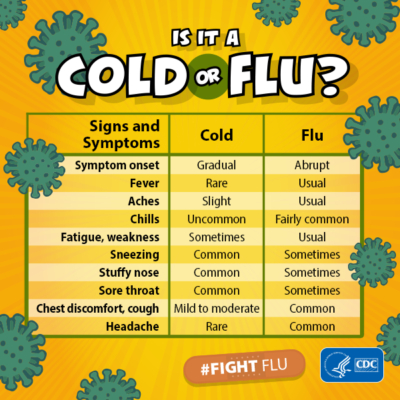Flu or Influenza is an extremely contagious respiratory illness
What is the Flu?
Influenza, commonly called ‘flu,’ is dreaded by people worldwide.
What is Influenza? It’s a highly infectious viral illness that affects anyone of any age at any given time. Children, the elderly, and those with weakened immune systems are most susceptible and risk developing complications. Australia generally sees a winter spike with different strains in circulation during the colder months.
What are the Causes of Flu or Influenza?
The flu is caused by an infection from the type A or B influenza virus. Once acquired, it can quickly spread from one person to the other. Many come down with the flu, especially individuals who are not protected with the latest vaccine shot, due to the rapid mutation of these viruses.
Cough and sneeze droplets can shoot as high as one meter in the air and can be transmitted once it lands on the mouth or nose of nearby people. Influenza can also be passed on through personal contact, saliva on shared drinks, or touching contaminated surfaces such as doorknobs or keyboards. Influenza is already contagious a day before symptoms appear on an infected person and can continue to infect for up to five days after getting sick.
Symptoms To Watch Out For
This debilitating illness can make you sick for about 4-5 days, but influenza symptoms can last for a week or more. Influenza is often mistaken for the common cold upon experiencing the following cold-like symptoms:
- Runny or stuffy nose
- Itchy or watery eyes
- Sore throat
- Coughing
- Fatigue
- Low Fever
Severity makes the distinction between the common cold and Influenza. You can expect a cold to gradually get worse in a few days. Congestion is less common in Influenza, but debilitating symptoms hit hard all at once. Flu symptoms include:
- Sudden, High Fever
- Persistent Headaches
- Body Aches and Pains
- Extreme Tiredness or Fatigue
- Respiratory Symptoms
When in doubt, especially if you or someone you know belongs to the high-risk group, contact your GP as soon as symptoms emerge. A professional can accurately diagnose, determine the best treatment, and help prevent flu complications.
Source: https://www.health.gov.au/health-topics/flu-influenza
Influenza A Virus and Flu Pandemics in History
Hundreds of strains comprise influenza viruses, but Influenza A is responsible for causing illness in humans and animals such as birds or pigs.
The Influenza A virus is broken down into 16 H and N subtypes classified under “H#N#“ combinations, three of which are highly contagious. H1N1, H2N2 and H3N2 have wreaked havoc in past outbreaks.
Influenza viruses, given their ever-mutating nature, are also named by the World Health Organization according to:
- the host of origin, i.e. swine, duck (none if on humans)
- the geographical location of origin
- strain number
- discovery or isolation year
Here are some examples of Influenza A virus strains:
- A/Duck/Australia/749/80 (H1N1) for a virus of duck origin
- A/Perth/16/2009 (H3N2) for a virus of human origin
Influenza A viruses have caused millions of deaths in major flu pandemics of the 20th century. The Spanish flu in 1918-1919, involving the H1N1 virus, was a global disaster that wiped 3-5% of the world’s population. In 1957, the next outbreak followed. Asian Influenza, caused by a mixed-species H2N2 virus, took the lives of 70,000 people. The 1968 pandemic, or Hong Kong flu, caused by an H3N2 virus, killed 1 million people. Swine flu was the most recent pandemic that quickly became widespread across several countries in 2009. It was caused by a novel H1N1 virus strain that resulted from the triple reassortment of bird, swine and human flu viruses.
Influenza B Virus And How It Affects You
Influenza B does not undergo subtyping like influenza A, rather broken down into individual strains. There’s little difference between influenza A or B viruses once you get infected. The distinction lies in how they are classified and the possibility of causing another pandemic. Though less common, Influenza B can potentially cause seasonal outbreaks and cannot be overlooked.
Influenza A and B in vaccines
Vaccine researchers anticipate which flu virus strains are likely to circulate in the Southern Hemisphere and cause illness during the flu season. Traditionally, two Influenza A strains and one influenza B strain were included in seasonal flu vaccinations. Flu strain recommendations for the upcoming flu season can always be found on Corporate Care‘s website.
Flu shots – The Best Protection Against Influenza
Our team at fluvaccination.com.au will administer the most up-to-date influenza vaccine to protect against the four flu strains and prevent outbreaks. Workplace flu vaccinations are ideally held before the onset of winter to maintain a healthy workforce and minimise the impact of Influenza on business.
Getting a quick flu jab can go a long way in receiving year-round protection not only for yourself as an employee but your co-workers and family. If you inevitably come down with the flu, symptoms will be manageable, and you’ll be thankful you opted to be immunised. Ensure to take good care of yourself, stay hydrated, get plenty of rest, and observe proper measures not to spread the virus.
Influenza Facts
Our Locations
We have clients in all main cities in Australia (Sydney, Melbourne, Brisbane, Canberra, Adelaide, Perth), surroundings, remote and rural Australia.

